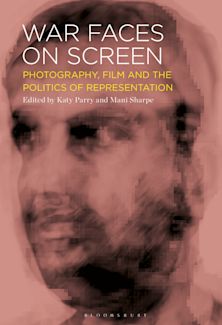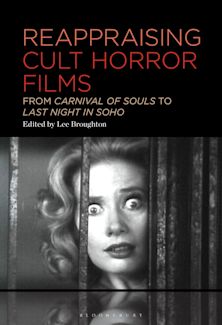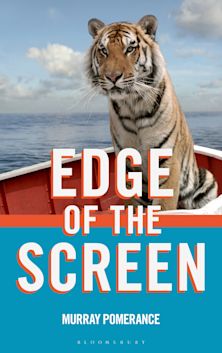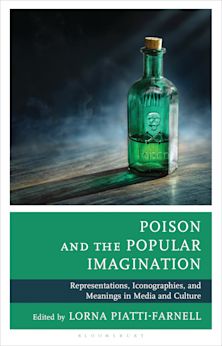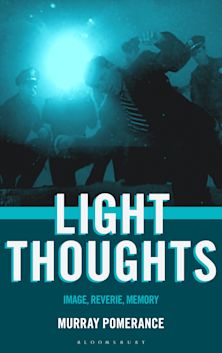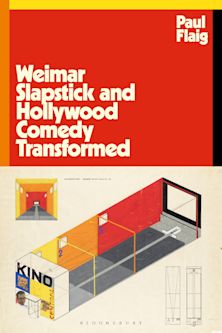- Home
- ACADEMIC
- Film & Media
- Film History
- La Dolce Morte
This product is usually dispatched within 3 days
- Delivery and returns info
-
Free CA delivery on orders $40 or over
You must sign in to add this item to your wishlist. Please sign in or create an account
Description
With the exception of die-hard aficionados of European or Italian horror cinema, most people may not have heard of giallo cinema or have seen many films in this subgenre of horror. Most academic film studies tend to ignore horror cinema in general and the giallo specifically. Critics often deride these films, which reveal more about the reviewers' own prejudices than any problem with the works themselves. As a counter to such biases, Mikel J. Koven argues for an alternative approach to studying these films, by approaching them as vernacular cinema-distinct from "popular cinema." According to Koven, to look at a film from a vernacular perspective removes the assumptions about what constitutes a "good" film and how a particular film is in some way "artistic."
In La Dolce Morte: Vernacular Cinema and the Italian Giallo Film, Koven explores the history and evolution of this aspect of cinema, and places these films within the context of Italian popular filmmaking. He addresses various themes, motifs, and tropes in these films: their use of space, the murders, the role of the detective, the identity of the killer, issues of belief, excess, and the set-piece.
In addition to being the first academic study of the giallo film in English, this book surveys more than fifty films of this subgenre. In addition to filmmakers like Mario Bava and Dario Argento, Koven also looks at the films of Lucio Fulci, Sergio Martino, Pupi Avati, Umberto Lenzi, and others. In all, the works of twenty-five different filmmakers are considered in this book. Also explored are the inter-relationships between these films: how one influences others, how certain filmmakers take ideas and build off of them, and how those ideas are further transformed by other filmmakers. Koven also explores the impact of the giallo on the later North American slasher genre.
Table of Contents
Part 2 Acknowledgments
Chapter 3 1. What is Giallo?
Chapter 4 2. Toward an Understanding of Vernacular Cinema
Chapter 5 3. Space and Place in Italian Giallo Cinema: The Ambivalence of Modernity
Chapter 6 4. Murder and Other Sexual Perversions
Chapter 7 5. Watching the Detectives: Amateur Detectives and the Giallo as Detective Cinema
Chapter 8 6. The Killer's Identity
Chapter 9 7. "Weird Science of the Most Egregious Kind": The Ambivalence of Belief in the Giallo Film
Part 10 8. "A Perverse Sublime": Excess and the Set Piece in the Giallo
Part 11 9. The Giallo as Cinema of Poetry
Part 12 10. From Giallo to Slasher
Part 13 Filmography
Part 14 Bibliography
Part 15 Index
Part 16 About the Author
Product details
| Published | Oct 02 2006 |
|---|---|
| Format | Paperback |
| Edition | 1st |
| Extent | 206 |
| ISBN | 9780810858701 |
| Imprint | Scarecrow Press |
| Dimensions | 233 x 154 mm |
| Publisher | Bloomsbury Publishing |
About the contributors
Reviews
-
...an interesting study of Giallo...a very detailed analysis of the main themes of the genre...
Killing In Style
-
La Dolce Morte is an informed and engaging examination of neglected and marginalized films that purposely provokes readers to re-examine biases against the giallo.
Rue Morgue
-
La Dolce Morte presents sound and interesting textual analysis of an impressive number of gialli.
Senses Of Cinema
-
...this is a serious contribution to film studies. It opens a side of Italian cinema that is rarely studied. Recommended.
Choice Reviews
-
...a carefully constructed presentation and discussion of one of the most important phenomena in modern cinema.
Film Studies
-
"Giallo," Italian for "yellow," is applied to a vernacular film genre (e.g., Sergio Martino's Torso, 1973) based on mystery novels with bright yellow covers that an Italian publisher has been producing since the 1920s. In the context of psychodynamics and Italian audiences, Koven (film and television studies, U. of Wales, Aberystwyth) explores themes including the outsider, sexually-driven murder, the amateur detective's role, and a view of these films from Pasolini's theory of a "cinema of poetry." He concludes that gialli, like other horror cinema, reflect modernity's ambivalence toward both traditional folk beliefs and science.
Reference and Research Book News











